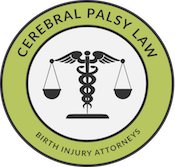What Is a Fetal Stroke?
A stroke is considered a fetal stroke when it takes place anywhere from 14 gestational weeks of age and delivery. Fetal strokes occur when blood supply to the brain is blocked or restricted, often resulting in the death of brain cells. Damages from fetal strokes can include permanent or fatal injury like cerebral palsy, epilepsy, and cognitive impairment. Fetal strokes are classified into the following two categories:
- Hemorrhagic strokes, which occur when trauma damages blood vessels in the brain.
- Ischemic strokes, which occur when clots block brain arteries.
The injuries associated with fetal stroke are severe. Medical professionals are obligated to provide care in accordance with medical standards to minimize brain injury. If you think your child’s cerebral palsy or birth injury resulted from a medical professional’s carelessness, we’re here to help. Contact the birth injury lawyers from Michigan Cerebral Palsy Attorneys today and we will review your case for free, answer your questions, and determine your legal options. You may reach us by calling our office toll-free at (888) 592-1857 or completing this online contact form.
What Causes a Fetal Stroke?
- Birth asphyxia or hypoxic ischemic encephalopathy (HIE): Stroke can occur as a result of oxygen deprivation to the infant’s brain.
- Trauma: Difficult delivery can cause severe brain damage from contusions in the brain, stretching and tearing of blood vessels and brain tissue, brain bleeds, changes in blood flow, and the formation of blood clots within blood vessels. Furthermore, the inappropriate use of vacuum extractors or forceps can lead to stroke.
- Preeclampsia: This condition causes mothers to develop high blood pressure, which ultimately can decrease blood flow to the baby and cause a stroke.
- Premature rupture of the membranes (PROM): When amniotic membranes rupture before labor, the baby risks developing a prenatal infection like chorioamnionitis. Prenatal infections may lead to stroke.
- Chorioamnionitis: Chorioamnionitis occurs when a bacterial infection causes the membranes to become inflamed. If treatment doesn’t begin immediately, the baby can develop meningitis, an illness that can lead to fetal stroke.
- Placental abruption: Placental separation from the uterus causes extreme bleeding, often resulting in severely restricted blood flow to the baby’s brain.
- Fetomaternal hemorrhaging: Severe bleeding leads to deprivation of blood and oxygen to the baby, often resulting in stroke.
- Placental thrombosis: Blood clotting occurs in the placenta and uterine veins, resulting in fetal stroke.
- Twin to twin transfusion syndrome: When blood moves from one twin to the next, both twins risk having strokes.
- Cardiac disorders
- Blood disorders may make an infant’s blood more likely to clot or hemorrhage.
- Use of cocaine during pregnancy
- Mother has congenital heart disease, an autoimmune disorder, a coagulation disorder or anticardiolipin antibodies
- Mother has high (hypertension) or low (hypotension) blood pressure
What Injuries Are Associated with Fetal Strokes?
- Hypoxic ischemic encephalopathy (HIE): HIE is a condition whereby limited oxygen to a baby’s brain causes cell death and damage to the central nervous system. Research suggests that HIE and fetal stroke often occur simultaneously, and many of the complications that cause HIE also cause fetal stroke.
- Recurrent strokes: undiagnosed strokes put babies at risk of having additional strokes
- Seizures
- Intellectual disabilities
- Developmental delays
- Cerebral palsy
- Paralysis or weakness on one side
- Communication impediments
- Loss of vision
- Psychological impairments
What Are the Signs and Symptoms of a Fetal Stroke?
 Signs and symptoms of fetal stroke may take months or years to appear. For this reason, it is important for physicians to conduct tests to attempt fetal stroke diagnosis if a cause or risk factor for fetal stroke is present after delivery. In the case that physicians fail to detect the stroke, the following signs and symptoms generally appear in the next few months or years of the child’s life:
Signs and symptoms of fetal stroke may take months or years to appear. For this reason, it is important for physicians to conduct tests to attempt fetal stroke diagnosis if a cause or risk factor for fetal stroke is present after delivery. In the case that physicians fail to detect the stroke, the following signs and symptoms generally appear in the next few months or years of the child’s life:
- Seizures
- Difficulty feeding
- Apnea (trouble breathing)
- Early preference for using one hand over the other
- Developmental delays such as late-developing crawling
How Are Fetal Strokes Diagnosed?
Because undiagnosed or untreated fetal strokes can result in severe, lifelong damage, it is crucial that physicians promptly detect and diagnose infant strokes. Primarily, early and close observation using blood tests and head imaging tests is imperative. The following are tests that doctors must take when the signs or symptoms of fetal stroke are present:
- Blood tests
- MRI
- MRA (essentially an MRI of specific brain arteries)
- MRV (MRI of specific veins in the brain)
- CT scan
- CTA
- Cranial ultrasound
- Lumbar puncture (collects cerebrospinal fluid)
How Are Fetal Strokes Treated?
As with diagnosis, it is crucial that fetal strokes are treated immediately to prevent subsequent strokes and lifelong injury. The following treatments include:
- Hypothermia treatment: 72 hours of cooling the head and body within six hours of birth can reduce the possibility of death or neurological impairments for newborns who have suffered fetal strokes.
- Medication: Blood-thinning medications reduce the chances of recurring strokes, and anti-seizure medication aids stroke-induced seizing.
- Supportive therapies: Occupational, physical, or speech therapy regimens help stroke victims cope with lifelong conditions.
Legal Help for Fetal Stroke, Cerebral Palsy, and Birth Injury
Our Michigan cerebral palsy attorneys have decades of experience providing legal support to the families emotionally and financially burdened by a birth injury. Whether your child’s cerebral palsy resulted from the negligent medical handling of a fetal stroke or from another birth injury, we’re here to help.
For reference, the following incidents are considered negligent. If you experienced situations like these that led to an injury to you or your child, it is medical malpractice.
- Failure of medical professionals to monitor signs of fetal distress during labor and delivery
- Failure to order and perform an emergency C-section when signs of fetal distress are present
- Failure to properly assess, test for, diagnose, and treat the risks factors, causes, signs, and symptoms of fetal stroke
- Failure to test for fetal stroke when signs and symptoms are present
If your child has been diagnosed with cerebral palsy as a result of fetal stroke and you believe a medical professional violated the standards of medical care in one or more of these ways, don’t hesitate to call us at (888) 592-1857. Our skilled attorneys will assist you through all your legal and medical questions and determine if you have a case, free of charge.
Sources:
- Armstrong-Wells J, Johnston SC, Wu, YW, Sidney S & Fullerton HJ. “Prevalence and predictors of perinatal hemorrhagic stroke: results from the Kaiser Pediatric Stroke Study.” Pediatrics. 2009:123(3); 823-828.
- Golomb MR, MacGregor DL, Domi T, et al. “Presumed pre- or perinatal arterial ischemic stroke (Risk factors and outcomes).” Ann Neurol. 2001;50:163–168.
- Lynch JK, Nelson KB. “Epidemiology of perinatal stroke.” Curr Opin Pediatr. 2001;13: 499–505.
- Ichord R. Stroke in the newborn. In: UpToDate. Dashe JF (Ed), UpToDate, Waltham, MA, 2014.
